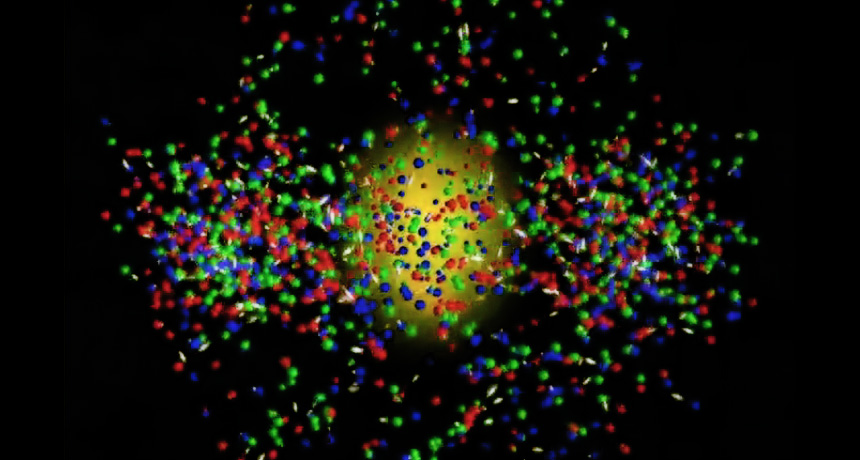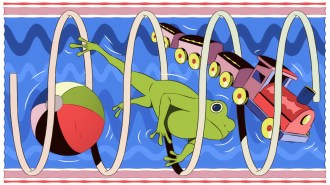Early quark estimates not entirely realized
Excerpt from the February 5, 1966 issue of Science News Letter

INGREDIENTS Brookhaven National Laboratory’s Relativistic Heavy Ion Collider slams protons and neutrons together, breaking the subatomic particles into a soup of their core ingredients — quarks and particles called gluons (illustrated)
Courtesy Brookhaven National Laboratory
 ‘Quarks’ may be source of quasars’ energy — The mysterious nuclear particles called “quarks,” which have not yet been detected but might nevertheless be basic building blocks of the atom’s core, could be the source of the tremendous energy generated by the puzzling star-like objects known as quasars…. Quarks, if they exist, would have a charge either one-third or two-thirds that of an electron …[and] masses of at least five billion electron volts. —
‘Quarks’ may be source of quasars’ energy — The mysterious nuclear particles called “quarks,” which have not yet been detected but might nevertheless be basic building blocks of the atom’s core, could be the source of the tremendous energy generated by the puzzling star-like objects known as quasars…. Quarks, if they exist, would have a charge either one-third or two-thirds that of an electron …[and] masses of at least five billion electron volts. — 






